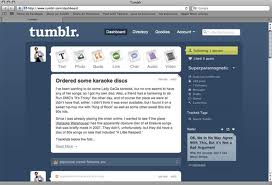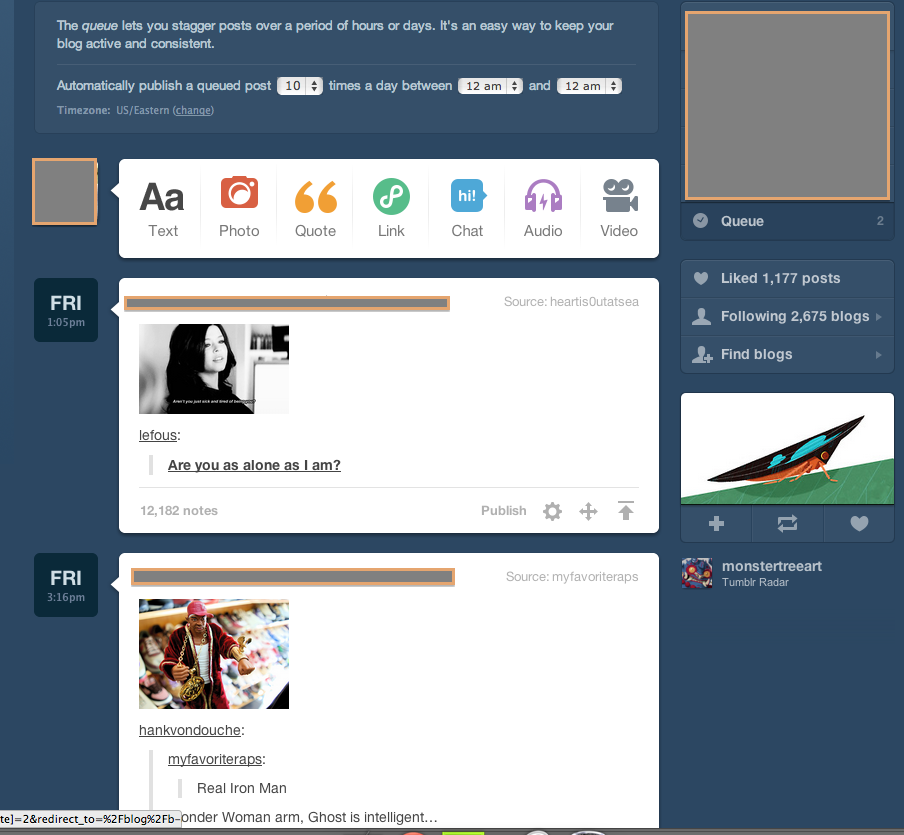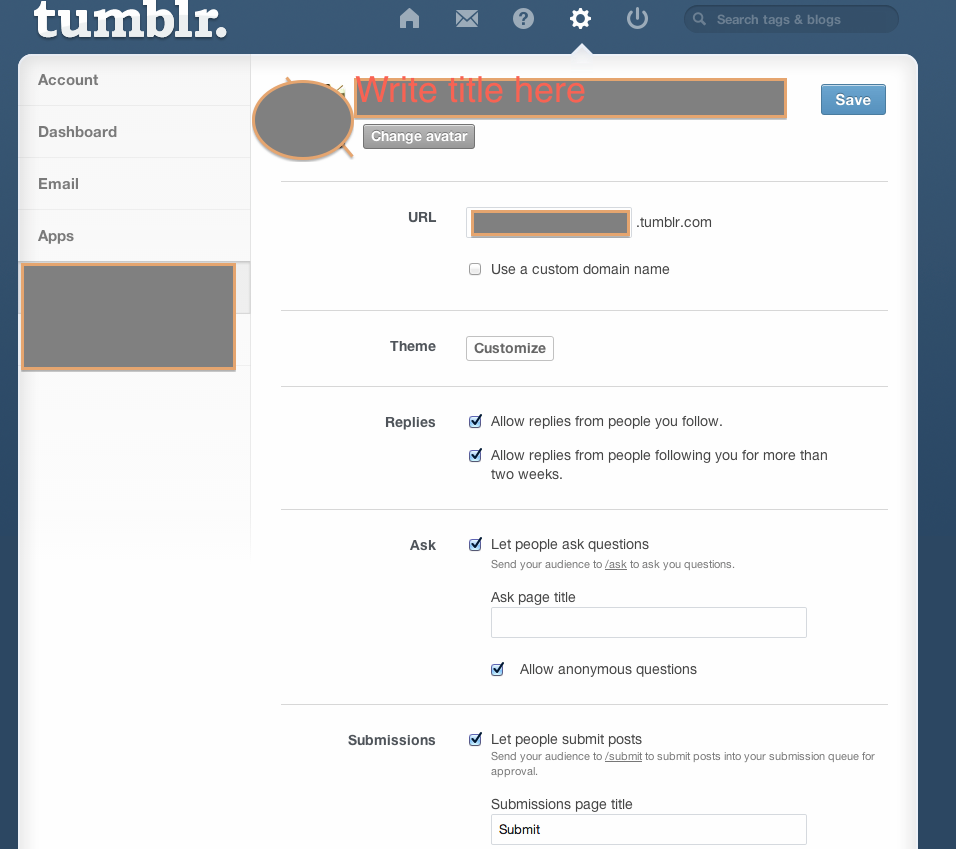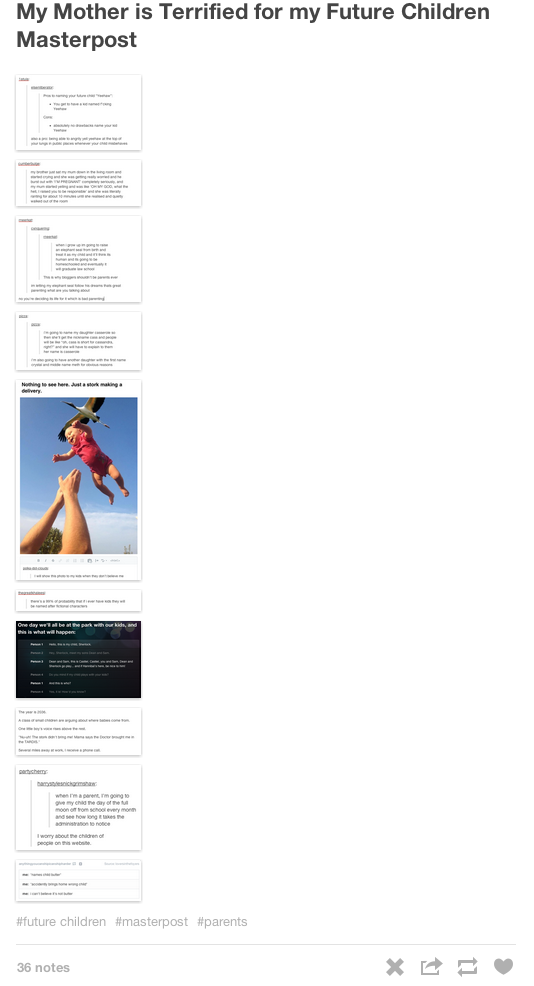
How to Use Tumblr
Steps 1 step 2 step 3 step 4 step 5 step 6 step 7 step 8

1) Go to Tumblr to sign up for an account. You will need to choose a username, which will act as your display name on the Tumblr dashboard, as well as part of the URL of your blog ("yourusername" dot tumblr dot com). Your username is not permanent, however; you may change it at any time by going to your blog settings.

2)Get to know the seven different types of posts. These types are varied to allow your best approaches to be put forward; you may even like to try each style over time. The seven types of posts are as follows:




 .
. 

3) Follow people and get your own followers. Followers are fellow Tumblr users who subscribe to your blog. Whatever you post will appear on their dashboard. When you follow other Tumblr users, their posts will then appear on your dashboard. If a person you don't want following you does so, you can block them. The more followers you get, the more chance you have of getting your posts reblogged and liked.

4) Like and reblog. If someone likes your post so much that they want to share it, they can reblog it. If someone reblogs one of your posts, their followers will see it on their dashboards. If someone doesn't want to reblog your post, they can 'like' your post. You can reblog and like the posts of others.All post are rated with the "notes"it gets.With each 'reblog' and 'like' the post increment one note.

5) Understand messages. If you allow access to your Ask box, you can receive questions from anyone who uses Tumblr, as well as anonymous visitors. Your answers to these questions will be posted to your blog, for all of your followers and visitors to see. You can also send fan mail, which is similar to asking or submitting something to someone, but more focused on giving positive comments to another person about their blog.


6) Queuing and drafts. If you wish to publish a string of posts while you're offline, you can add the posts to your queue, and choose at which intervals of time they'll be published (for example, every 15 minutes). Alternatively, you can appoint a certain time at which the posts are published, including date and time. These features are helpful if you're going on holiday and still want to blog, but won't have an Internet connection during your vacation. Drafts, meanwhile, allow you to save a post online; you can then finish the post when you next log onto Tumblr, and publish it whenever you wish.
7) Customize your Tumblr. The Customize page gives you access to all of the under-the-bonnet settings for your blog, and is split into several sections.




8) Post your own original content. To optimize the quality of your posts, ensure that text is well-written, images are relevant, and you keep to the theme of your blog, if you have one. The most popular Tumblr users are those who dedicate their blogs to a certain purpose. Add relevant tags to your posts, so that users searching for a certain topic are more likely to stumble upon your blog. It's also a good idea to cite the sources of things you did not write/create, or you'll be accused of plagiarizing. To protect yourself from plagiarism, type the URL of your own blog in the 'Source' box on the sidebar of the post composition page. Ensure that your material is interesting, and post at least once a day, or your followers will get bored with your inactivity and may even unfollow you.